The Brides of Dracula Blu-ray Movie
HomeThe Brides of Dracula Blu-ray Movie 
Collector's EditionShout Factory | 1960 | 86 min | Not rated | Nov 10, 2020
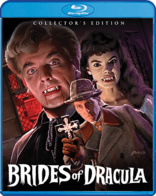
Movie rating
7.4 | / 10 |
Blu-ray rating
| Users | 3.5 | |
| Reviewer | 4.5 | |
| Overall | 3.6 |
Overview
The Brides of Dracula (1960)
A young teacher on her way to a position in Transylvania helps a young man escape the shackles his mother has put on him. In doing so, she innocently unleashes the horrors of the undead once again on the populace, including those at her school for ladies. Luckily for some, Dr. Van Helsing is already on his way...
Starring: Peter Cushing, Martita Hunt, Yvonne Monlaur, Freda Jackson, David PeelDirector: Terence Fisher
| Horror | 100% |
Specifications
Video
Video codec: MPEG-4 AVC
Video resolution: 1080p
Aspect ratio: 1.85:1
Original aspect ratio: 1.85:1
Audio
English: DTS-HD Master Audio 2.0 Mono (48kHz, 24-bit)
BDInfo verified
Subtitles
English SDH
Discs
Blu-ray Disc
Single disc (1 BD)
Packaging
Slipcover in original pressing
Playback
Region A (B, C untested)
Review
Rating summary
| Movie | 3.5 | |
| Video | 4.5 | |
| Audio | 4.0 | |
| Extras | 5.0 | |
| Overall | 4.5 |
The Brides of Dracula Blu-ray Movie Review
Reviewed by Brian Orndorf October 28, 2020After scoring a hit with 1958’s “Dracula,” Hammer Films was itching for a sequel, hoping to keep their exploration of vampiric activity going for another round of terror. While Christopher Lee wasn’t included in plans for a follow-up, Peter Cushing’s Doctor Van Helsing was, returning to duty for 1960’s “The Brides of Dracula,” and thank goodness for his presence. Gothic horror takes the long way home with the endeavor, with director Terence Fisher focusing on performances and production achievements, not pace for this round of Transylvania troublemaking. “The Brides of Dracula” has a little trouble revving its genre engine, but it’s a gorgeous picture, delivering a premiere showcase for Hammer style.
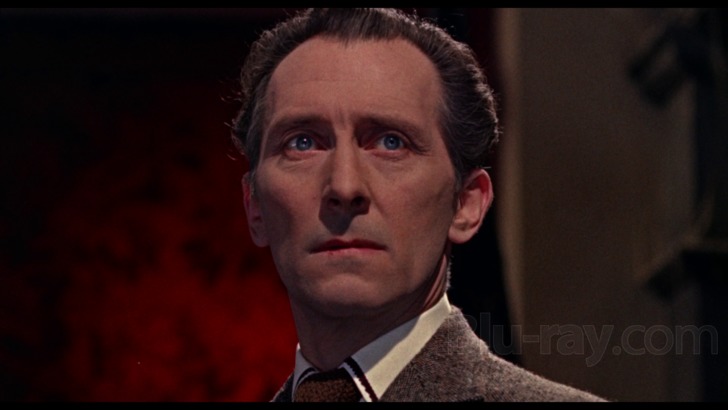
French schoolteacher Marianne (Yvonne Monlaur) finds herself stuck in Transylvania while making her way to her new job, taking up an offer to spend the night at a castle run by Meinster (Martita Hunt). During her stay, Marianne discovers Meinster’s son, Baron (David Peel), is a prisoner in the dwelling, helping him to break free. Unknowingly, Marianne unleashes a vampire on the community, with Baron free to feed on the locals. Arriving in the village is Dr. Van Helsing (Peter Cushing), who understands the signs of distress, searching for the source of such evil.
The screenplay for “The Brides of Dracula” asks quite a bit from the viewer, especially with Marianne’s behavior in the first act. While striving to act nobly, Marianne isn’t the brightest bulb, talked into basically anything as she tries to project confidence, only to be lured into a plan to free Baron from his cage. As heroines go, perhaps the production could do better, but the opening of “The Brides of Dracula” is really just a set-up for Van Helsing’s arrival, and the film lifts up a few inches with Cushing around. The actor brings a pleasing concentration to the endeavor, providing emphasis on detective work and authority as the character deals with a threat he’s encountered before. Baron is a compelling enemy, with the writing trying to locate a fresh way to conduct old business, but once Van Helsing arrives 30 minutes into the picture, matters become more interesting and procedural, though Fisher doesn’t mind spending minutes of screentime simply following the players as they navigate castle spaces. It’s not exactly edge-of-your- seat stuff.
The Brides of Dracula Blu-ray Movie, Video Quality 
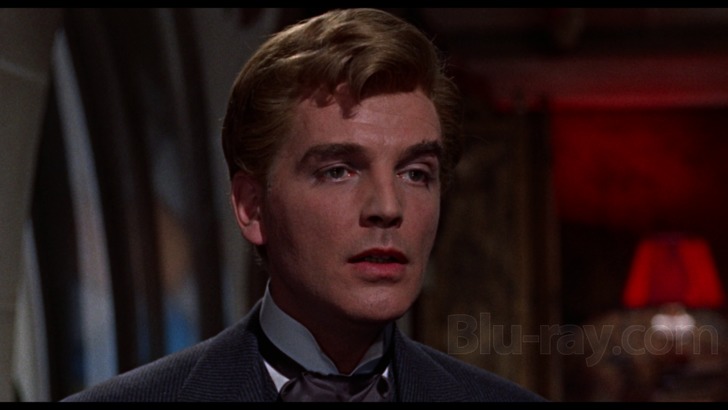
"The Brides of Dracula" was previously issued on Blu-ray via Universal Studios in 2016. Shout Factory brings the title back to the market with an AVC encoded image (your choice of 1.85:1 or 1.66:1 aspect ratios) presentation sourced from a "New 2K Scan From The Interpositive." "The Brides of Dracula" is a film that uses color brilliantly, with the production striving to provide a lush viewing experience for the gothic chiller. Hues are excellent all around, with costuming leading the charge, offering deep purples and reds, while male formalwear handles with creamy whites and grays. Interiors retain their stone and woodsy appearances, and exteriors deliver accurate greenery. Blood reds and blue eyes are equally striking. Detail emerges with some softness, but textures are secured throughout, with period decoration appreciable, along with coarse and silky elements of fashion. Delineation is satisfactory. Grain is film-like. Source is in good shape, with some brief speckling.
The Brides of Dracula Blu-ray Movie, Audio Quality 
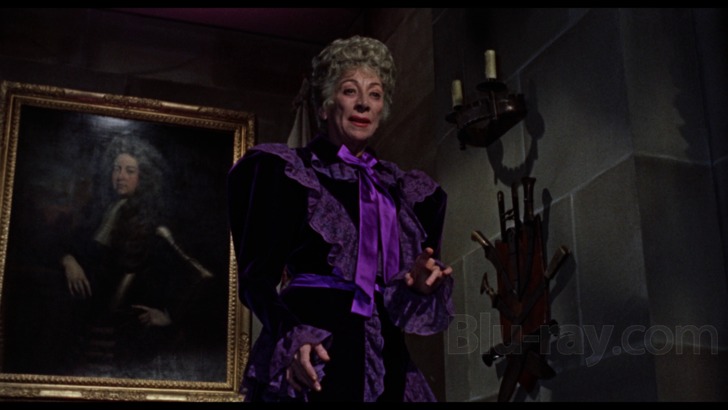
The 2.0 DTS-HD MA sound mix provides an aged but clear understanding of dialogue exchanges, which retain performance choices and accent work. Scoring delivers comfortable instrumentation, moving from loud orchestral stings to moodier organ sounds. Sound effects are acceptable. Mild hiss is found throughout the listening experience.
The Brides of Dracula Blu-ray Movie, Special Features and Extras 
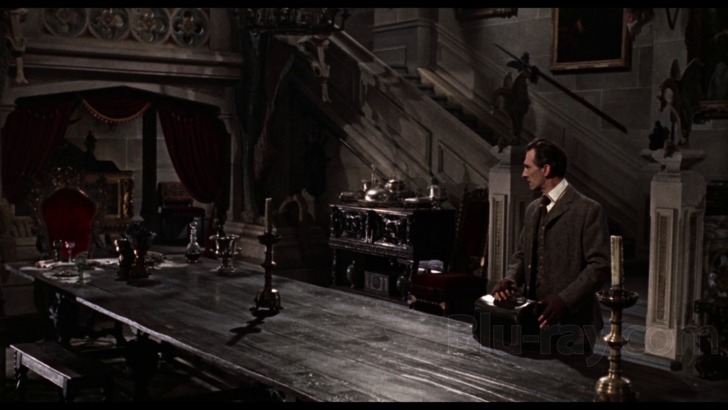
- Commentary features film historians Constantine Nasr and Steve Haberman.
- "The Men Who Made Hammer" (58:21, HD) is an appreciation piece from writer Richard Klemensen, who's especially fired up to talk about director Terence Fisher and his lengthy career. Biographical details are shared, including Fisher's growing interest in moviemaking, which inspired him to pursue work in the industry, gaining respect in a post-war business. Eventually, the helmer finds a home with Hammer Films, and Klemensen is quick to defend Fisher from accusations of merely being a journeyman filmmaker, exploring his skills with preparation and technique. Settling into horror entertainment, Fisher delivered offerings such as "The Curse of the Werewolf" and "The Phantom of the Opera," and the interviewee spotlights "The Brides of Dracula" as a particular career highlight. Fisher's unsteady career is detailed, including non-Hammer endeavors and box office busts, but Klemensen keeps things positive, underlining the subject's ability to turn next to nothing into big screen magic, also praising his relationships with actors. Fisher's career and health decline are studied, along with Klemensen's personal relationship with the man, inspiring him to mount a magazine tribute after Fisher's death in 1980.
- "The Men Who Made Hammer" (16:24, HD) is a second appreciation piece from writer Richard Klemensen, who turns his attention to cinematographer Jack Asher. Beginning with biographical details, Klemensen is quick to explore Asher's career growth and reputation for careful work, which brought on accusations of being too slow for Hammer employment. Klemensen focuses on "The Brides of Dracula" as the premiere achievement of Asher's Hammer years, comparing the work to "Citizen Kane." Collaborations are studied and ingenuity is celebrated before the inevitable slide into a career decline is tracked. Klemensen closes with his effort to contact Asher, who disappeared after retirement, eventually finding the subject, with those interview tapes treasured by family members and admirers long after his death in 1991.
- "The Eternal and the Damned" (15:22, HD) is an appreciation piece from author David Huckvale, who focuses on the work of composer Malcolm Williamson, charting his early career and musical influences before settling into "The Brides of Dracula." Seated at a piano, Huckvale provides a run-through of themes and technique, identifying the work that make Williamson so special.
- "Making of 'The Brides of Dracula'" (31:10, HD) is an in-depth look at the creation of the Hammer production, offering interviews with film historians Richard Golen and Wayne Kinsey, actress Yvonne Monlaur, sculptress Margaret Robinson, art director Don Mingaye, script supervisor Pauline Harlow, producer Anthony Hinds (audio only), assistant director Hugh Harlow, and screenwriter Jimmy Sangster. Topics include early development, casting, makeup effects, cast and crew camaraderie, and the disappointing initial release of "The Brides of Dracula," which has turned into a cult appreciation for the endeavor.
- "The Haunted History of Oakley Court" (15:13, HD) joins authors David Flint and Allan Bryce as they tour the Windsor, UK location, which has been features in numerous films, including "And Now the Screaming Stars," "Vampyres," and "The Rocky Horror Picture Show." The men explore the grounds and the interiors, pointing out famous sights. They also provide a history of Amicus Productions.
- Still Gallery (7:26) collects film stills, publicity shots, BTS snaps, lobby card, poster art, and exhibitor information.
- Radio Spot (1:03) contains a commercial for "The Brides of Dracula."
- Theatrical Trailer #1 (2:20, SD) Theatrical Trailer #2 (1:45, SD) are included.
The Brides of Dracula Blu-ray Movie, Overall Score and Recommendation 
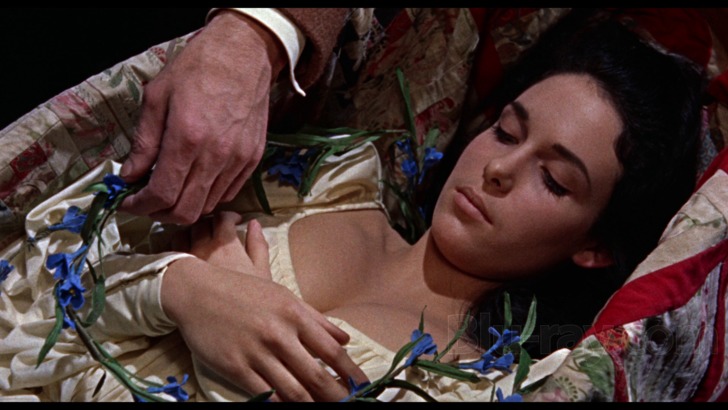
"The Brides of Dracula" is more leisurely than pulse-pounding, with Fisher trying to set the mood of the endeavor as bodies begin to pile up and innocence is corrupted. Performances are solid, with Cushing's intensity desperately needed at times, and technical achievements, including set design and costuming, are exceptional, creating a period realm that cinematographer Jack Asher covers with a masterful use of color and lighting. It's a fascinating film to watch, but not always to follow, in need of more direct contact with suspense to come alive as a vampire adventure.
Similar titles
Similar titles you might also like

The Kiss of the Vampire
Collector's Edition
1963

The Evil of Frankenstein
Collector's Edition
1964

Nightmare
Collector's Edition
1964

The Curse of the Werewolf
Collector's Edition
1961

Night Creatures
Captain Clegg | Collector's Edition
1962

The Phantom of the Opera
Collector's Edition
1962

Lust for a Vampire
1971

Dracula: Prince of Darkness
Collector's Edition
1966

Horror of Dracula
Dracula / Warner Archive Collection
1958

Taste the Blood of Dracula
1970

Scars of Dracula
1970

Twins of Evil
1971

Paranoiac
Collector's Edition
1963

Dracula A.D. 1972
1972

The Vampire Lovers
Collector's Edition
1970

Countess Dracula
1971

Daughters of Darkness
Les lèvres rouges | Remastered Special Edition | 4K Restoration
1971

The Vampire's Night Orgy
La orgía nocturna de los vampiros
1974

Vampire Circus
1972

VFW 4K
2019
